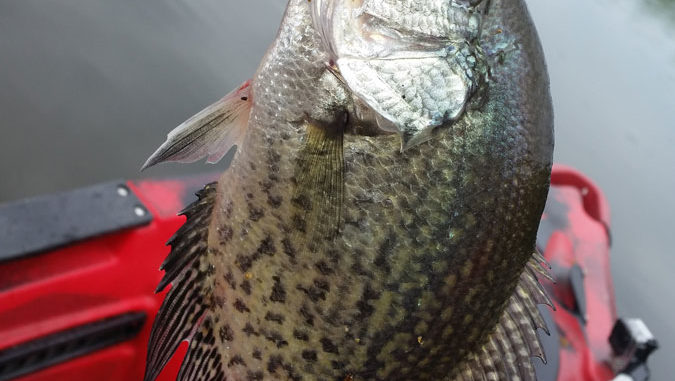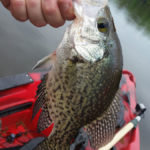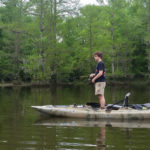
Kayaks, canoes can offer ways to reach fish
It is safe to say that nearly everyone has fished a body of water with limited access such as a farm pond or private pond. A small, properly stocked body of water can be a great place to get lots of bites and catch fish well above normal sizes. The majority of these ponds and lakes are usually fished from the shoreline. The downfall is that where there is good offshore structure, it’s difficult to get close enough to cast to those good spots.
One of my largest bass ever came from such a location. This pond was used as a means of cooling high-heat machinery for a local business. The shoreline was dotted sporadically with a tree here, a short line of bushes there. Sunfish, including bluegill, robin and shellcracker, would stack in these areas and bed. One particular tree succumbed to a large wind, toppling over into the water.
The next spring, as the various panfish began to spawn, the shallow water displayed bed after bed, resembling something you would expect to see in an alien horror flick. One largemouth bass also kept close to the tree that went down. It would hover over it’s newly made bed, right up until you got close enough to look for it.
Due to the way the tree was downed and the bushes were lined up further down the shore, these best spots were impossible to reach with a cast from the bank. Even though the pond was only about an acre in size, I pushed in the canoe and paddled towards the middle.
That was the perfect thing to do, as not just that bass, but others throughout the pond, were not spooked in the least. Fish after fish, including the trophy bass, were landed. There was not much paddling, but there was plenty of catching.
Ponds such as that one are prime territories for kayaks and canoes. It is not always about paddling a mile downstream. Access is not always about fitting into the shallows or zig-zagging between swampy vegetation. Access in this case is something to get you into the water so you can attempt a different approach to get the cast you need.
North Carolina is littered with small ponds used for irrigation, industry or just landscaping. Even privately owned and maintained impoundments used for hunting waterfowl provide great hidden treasures for the angler searching for something different. Of course, permission must be gained first unless you already have access to these small waters.
Checking on-line sources such as Google or Yahoo maps can get you started in the right direction. If you don’t know who owns the land on which the water is located, you can gain further information by going to the county or municipality’s on-line GIS systems. This will provide the name of the property owner, along with property boundaries.
In a search of a fishing hole near the college my son attends, we found a pond owned by the city. It was off the main highway and only accessible by dirt path. After a few phone calls, we also found out that not only was it legal to fish there without a special permit, but we were also allowed to use paddle craft. Because of the remote location, we enjoyed a beautiful day together on the water without any others around in the water or on the banks.
Do a little research and tote your canoe or kayak a few miles, and you may get into some excellent fishing on small waters.





Be the first to comment